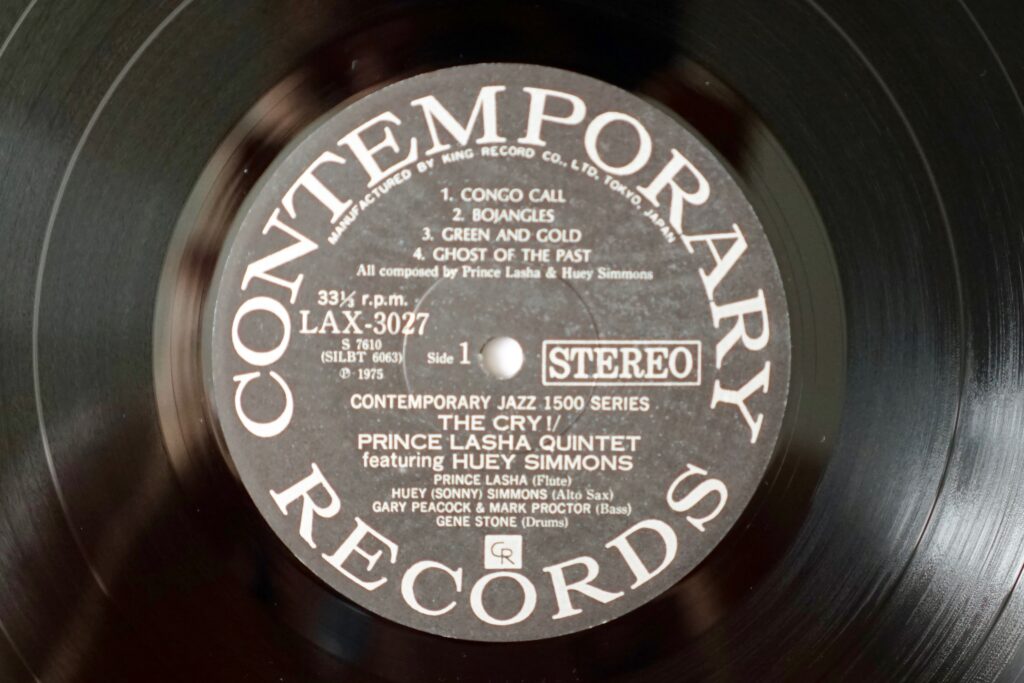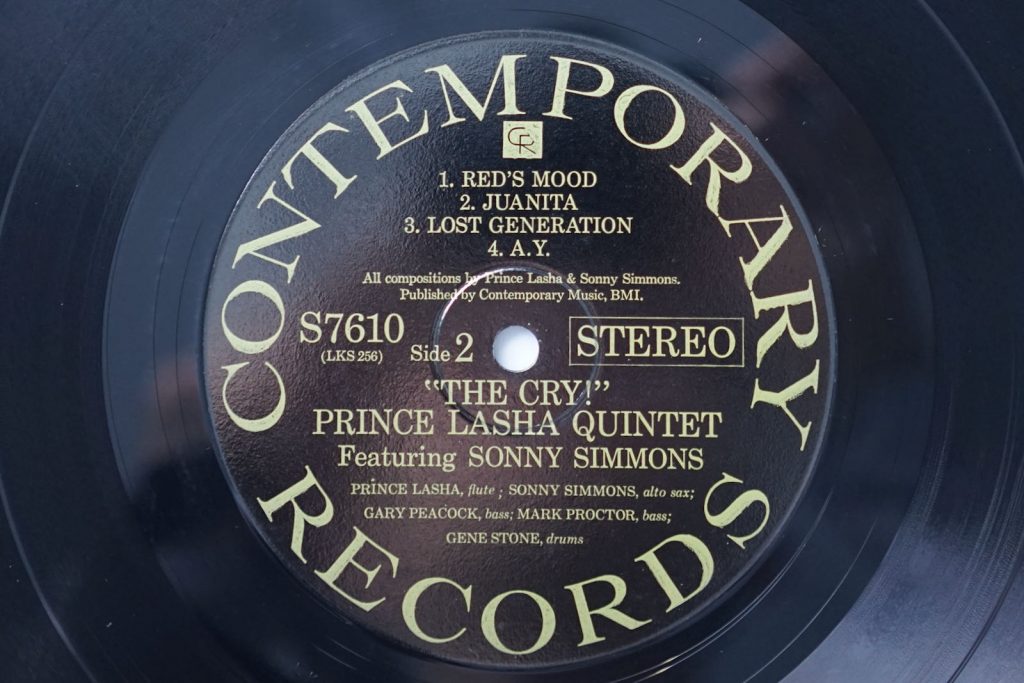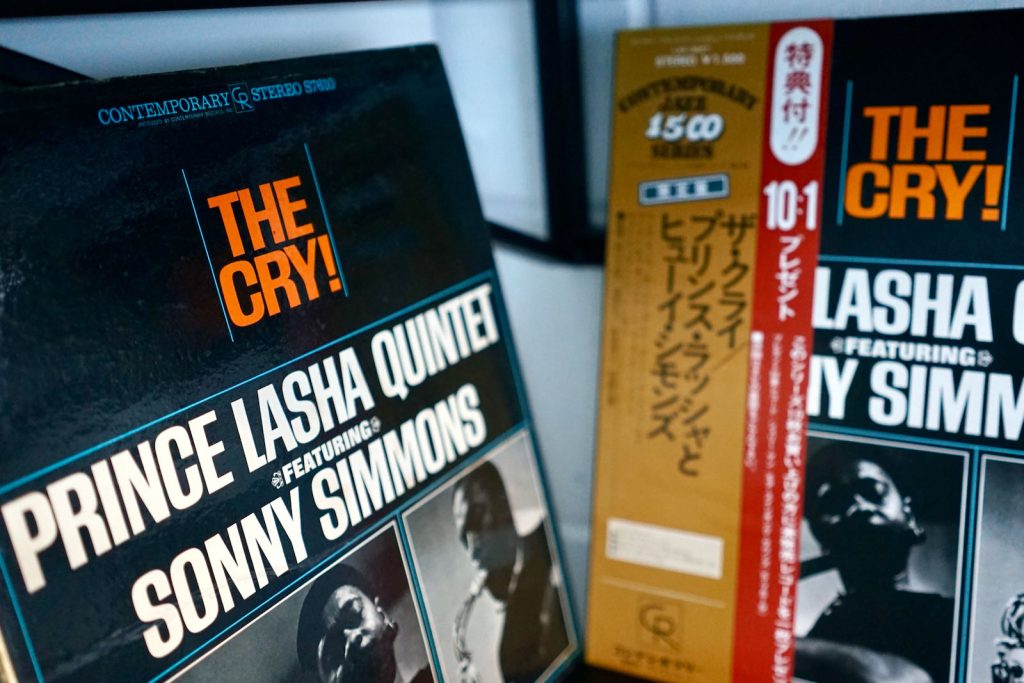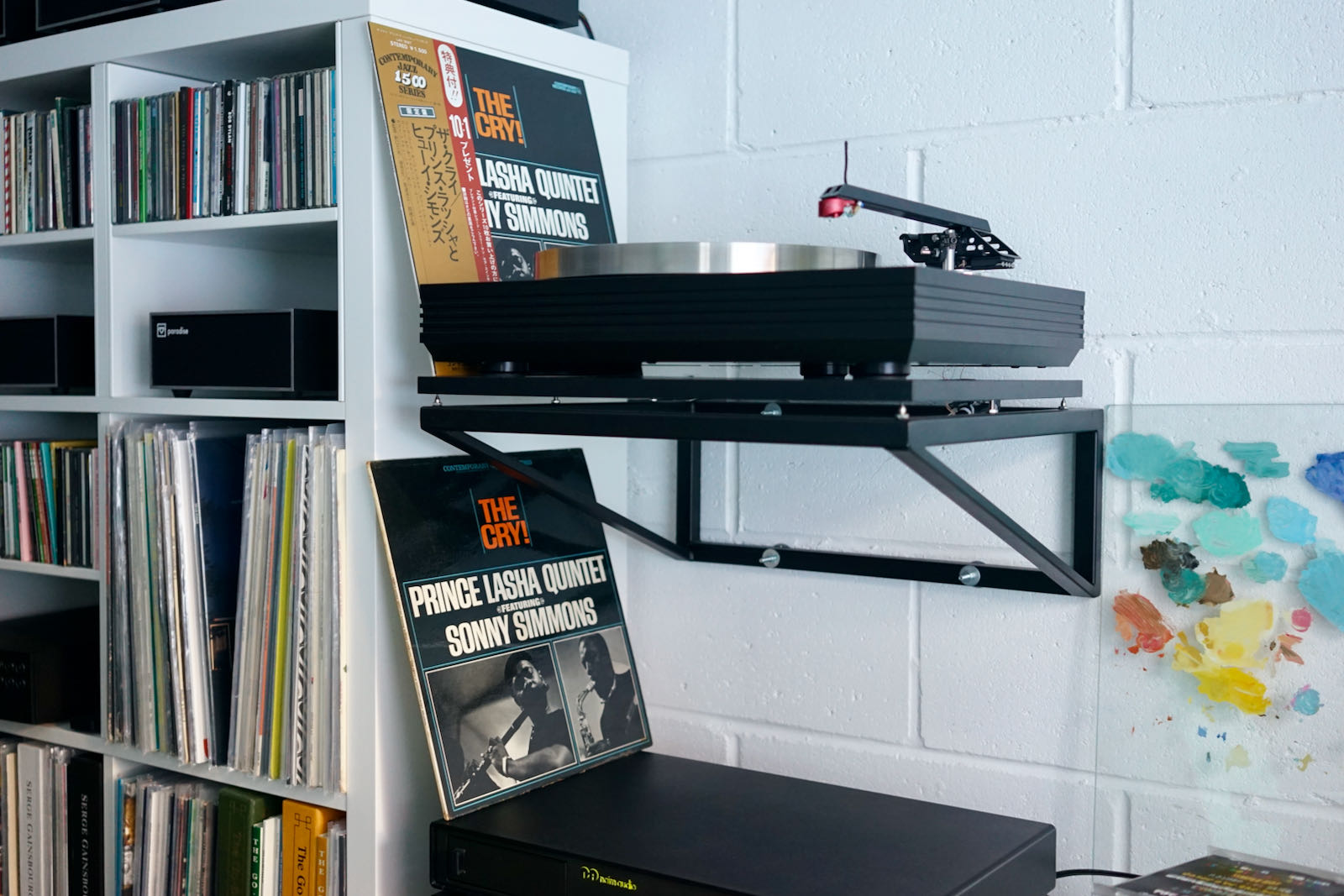Best Pressing Shootout: Prince Lasha, The Cry!, Take 2
Despite all appearances (I haven’t posted anything to this site since the summer!), I have been busy with my system, and listening to a ton of records. I’ve just also been very busy with my work… So there’s a lot of catching up to do.
But let’s start here. Last weekend, I took receipt of the third version of the Supatrac Blackbird tonearm that I reviewed giddily this summer. For now, I’ll just say that I’ve been blown away by it once again — music is sounding richer, clearer, punchier, more engaging, more startlingly intimate than ever. I’m having my latest “rediscovering my record collection” period, and finding that discs I previously thought sounded equally excellent now sound very different — some ascending even higher into the sublime, others pausing where they were.
Prince Lasha’s The Cry! has, for years now, generally stuck out as single best-sounding record in my collection. And it has absolutely made that leap to the next level — it’s sounding more stunningly, absurdly excellent than ever.
My copy is not a US original: it’s a Japanese reissue by King Records. Back in April 2020, I compared my pressing to a friend’s yellow-label second-issue US pressing, and was a bit surprised to find that my Japanese pressing sounded better.
Since another friend recently bought a black-label first US pressing and was willing to lend it to me… I couldn’t resist another comparison, in the context of my now vastly-different and vastly-improved system.
The Record
I said everything I had to say about this record in the original shootout. I still absolutely love this record and never get sick of it. The fact that it’s as stellar production-wise as musically is just one of life’s little miracles.
The Pressings
So, yes: my 1975 King Records reissue, which won the shootout last time. At some point over the past year and a half, I realized mine is actually a promo copy — it’s got a stamp to that effect.

And, below, the latest contender: a black-label US first pressing with D3 stampers. This one is in excellent shape, visually looks perfect, but does play with a little bit of surface noise. I gave it a good multi-stage washing before the listening test: enzyme cleaner, Spin Clean, Kirmiss ultrasonic cleaning, distilled water bath. But the surface noise didn’t go away completely — so it’s always possible that it was subjected to some kind of abuse, such as being played on a portable turntable with very heavy tracking weight.

The black 60s Contemporary labels are really beautiful, by the way — with a nice glossy dappled texture. The jacket on the original is also gorgeous, with thick cardboard and a lovely glossy sheen. By contrast, the Japanese labels and jacket are unexceptional — paper labels, thinnish cardboard.

Verdict
Once again, the Japanese King Record pressing was the clear winner here. Instruments were slightly more focused in the soundstage on the US original, and the treble had a pleasingly percussive quality (it strikes you, without being grating.)
But the Japanese pressing is just better: bigger, clearer, bolder, juicier. It’s amazingly euphonic while also being astoundingly revealing. Whereas I often noticed a certain “greyness” in the presentation of the US original, the King pressing utterly banished that word from my vocabulary. It remains the best-sounding single record I’ve got in my collection.
Jackets and labels aside, if I was in the market for another copy, I would definitely go for the 1975 King Records pressing. It’s seriously life-changing.
Listening Notes
Current setup: LP12-esque turntable (externalized Lingo 4 PSU, Karousel bearing, modified Mober aluminum plinth, Stack Audio Serene baseplate, Tiger Paw Khan top plate, Mober subchassis, Supatrac Blackbird tonearm, Linn Troika cartridge rebuilt by Goldring), Paradise phono stage, fully Ryan Sound Labs-ified Naim 32.5 preamp, 2 x mono-iced Naim 110 amplifiers into custom crossovers handling mids and highs, Lab.gruppen IPD-1200 active bass amplification, Yamaha NS-1000M speakers.
“Congo Call”
Contemporary 1963. Surface noise but very dynamic. Flute is woody and not overly sharp. Percussion super sharp — atmospheric cues make me feel like I’m in the room. Tremendous sense of space, especially from percussion. Wide, warm, delicate cymbals, never edgy or piercing, with a nice, gentle splash.
King 1975. No surface noise. A bit bolder, bouncy, with a totally black background. Makes me see that there was a nice “chalkiness” to the treble on the Contemporary original that’s gone here: the highs here are a little less pronounced, emphasized. But this feels truer, and those little spiral cues are still present from percussion. The flute still nice and “woody,” not harsh or grating… but with the extra juice, bounce. This is the better pressing, good as the original is.
All of Side 2
Contemporary 1963. “Red’s Mood”: After listening to the King for a bit, yes: this pressing is indeed brighter, a bit chalky. The nice thing is that the cymbals are nicely delicate, and feel like they’re way back in the soundstage. Slightly colourless in comparison to the King. But the treble does pop a bit here, which makes it engaging. Listening to those two basses duel it out… pure audio bliss, both very in focus. Drum solo, though, is a bit distant and dull. “Juanita”: Texture is very nice on bowed basses, but things do feel a bit lifeless and grey. Less magical than I expect this song to sound (having long thought of it as maybe the best-sounding song of any in my collection). The sax sounds dull, but the cymbals are sharp, so perhaps a production decision? The outro provides audio thrills from the bowed bass on left channel, but the sax is dull. “Lost Generation”: The sax is clear and palpable, stunningly defined. When the bass emerges well into the song, it’s startling, as it should be: big and bouncy. When things get louder, though, a certain greyness comes back, coming mostly from the cymbals I think. “A. Y.”: Sounds a bit grey and distant, not nearly as sharp as the best on this disc.
King 1975. “Red’s Mood”: Much better right away. Bigger, juicier, much clearer. There is no lack of treble zing on this side: all the instruments feel bigger, and the soundstage is more filled in. Cymbals are STUNNING, all-enveloping. No filter on sax, which is so finely grained, with perfect texture, much better than on the US original. In the drum solo, there is no dullness at all, just amazing focus. “Juanita”: Magic, as I expect it to be. Bass bounces right out at you from the right speaker. It’s a soft track with delicate but wide cymbals. Reading back notes from OG, this is obviously in another league. No greyness: the word is not even in my mind here, it’s been banished from my vocabulary. “Lost Generation”: The sax is not as compact in the soundstage here: it’s less defined and palpable than on the US original. But it’s much warmer and juicier. The upright bass is gorgeous when it comes in. When the track gets loud, it holds together beautifully, unlike the OG — all instruments remain sorted in the soundstage. “A. Y.”: Indeed, this not as great sounding a track as the others, but better here than on the OG.

